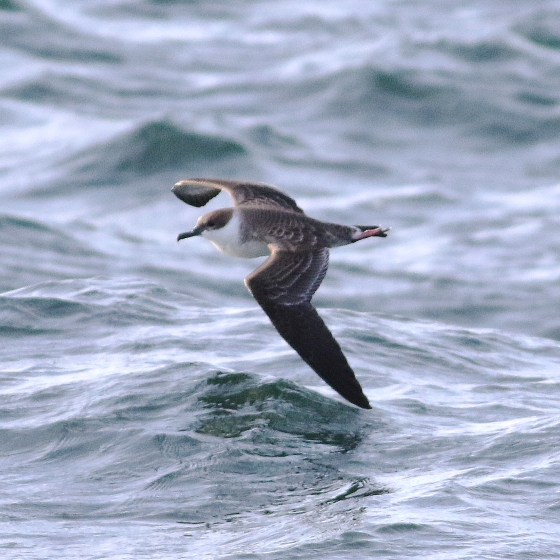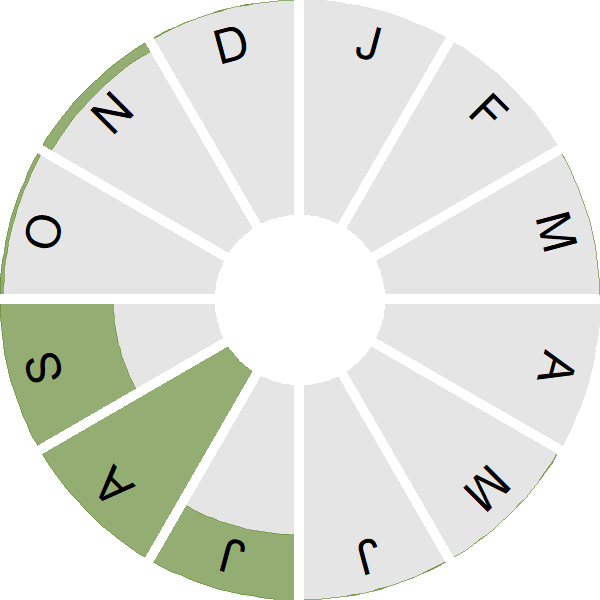Great Shearwater

Introduction
This large, dark-capped, white-rumped, shearwater is seen in offshore waters during the summer and early autumn.
Great Shearwaters breed on a handful of islands in the South Atlantic and leave their breeding sites from March or early April, undertaking a huge flight that will see them complete a clockwise loop around the Atlantic, before heading back to their breeding islands.
These birds typically arrive in British and Irish waters during August, as can be seen in the BirdTrack reporting rate graph. Many individuals head to the Bay of Biscay, where large numbers can congregate through to October. These are thought to be non-breeding birds because breeding has already commenced in the South Atlantic colonies by October.

Key Stats
Identification
Songs and Calls
Call:
Status and Trends
Conservation Status
Population Size
Population Change
Population trends of this scarce species are not routinely monitored.
Distribution
Great Shearwaters are recorded mostly from the coastline of southwest England but there are annual records from selected sites along the North Sea coast.
Occupied 10-km squares in UK
or view it on Bird Atlas Mapstore.
or view it on Bird Atlas Mapstore.
Distribution Change
This vagrant is too rarely reported to map distribution change.
Seasonality
Great Shearwater is a scarce passage seabird recorded at selected seawatching locations, mostly from mid June to September.
Weekly pattern of occurrence
The graph shows when the species is present in the UK, with taller bars indicating a higher likelihood of encountering the species in appropriate regions and habitats.

Movement
Britain & Ireland movement
Biology
Survival and Longevity
Survival is shown as the proportion of birds surviving from one year to the next and is derived from bird ringing data. It can also be used to estimate how long birds typically live.
Classification, names and codes
Classification and Codes
- Order: Procellariiformes
- Family: Procellariidae
- Scientific name: Ardenna gravis
- Authority: O'Reilly, 1818
- BTO 2-letter code: GQ
- BTO 5-letter code: GRTSH
- Euring code number: 400
Alternate species names
- Catalan: baldriga capnegra
- Czech: burnák velký
- Danish: Storskråpe
- Dutch: Grote Pijlstormvogel
- Estonian: mustkõht-tormilind
- Finnish: isoliitäjä
- French: Puffin majeur
- Gaelic: Fachach-mòr
- German: Großer Sturmtaucher
- Hungarian: nagy vészmadár
- Icelandic: Hettuskrofa
- Irish: Cánóg Mhór
- Italian: Berta dell'Atlantico
- Latvian: lielais vetrasputns
- Lithuanian: didžioji audronaša
- Norwegian: Storlire
- Polish: burzyk wielki
- Portuguese: pardela-de-barrete
- Slovak: víchrovník atlantický
- Slovenian: veliki viharnik
- Spanish: Pardela capirotada
- Swedish: större lira
- Welsh: Aderyn Drycin Mawr

